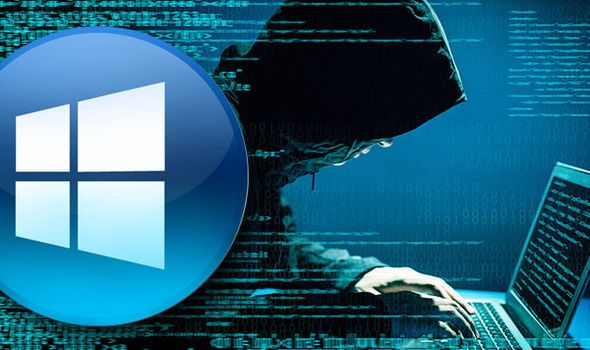Introduction
Microsoft Attack : On July 19, 2024, Microsoft experienced a significant cyberattack on its Exchange Online email servers. The attack, attributed to the Chinese state-sponsored hacking group Storm-0558, resulted in the compromise of numerous high-profile email accounts, causing widespread concern among affected organizations and cybersecurity experts. This report provides an in-depth analysis of the attack, including its mechanism, scope, response, and broader implications.
Nature and Mechanism of the Attack
Exploitation of Token Authentication System
The attackers exploited a flaw in Microsoft’s token authentication system. They obtained a cryptographic key that allowed them to forge authentication tokens, granting them unrestricted access to any Exchange Online account. This key, dating back to 2016, should have been retired by 2021 but remained active due to an oversight in Microsoft’s key rotation policies (GBHackers) (BleepingComputer). This flaw enabled the attackers to bypass security measures and access email accounts directly.

Technical Details
The attackers used the compromised key to create authentication tokens, which they then used to gain access to email accounts. These tokens, which were supposed to be secure, could be manipulated to impersonate legitimate users. The breach was facilitated by a previously unknown vulnerability in the token validation process, which allowed the attackers to bypass standard security protocols (GBHackers).
Scope of the Breach
High-Profile Targets
The attack compromised over 500 email accounts across 22 organizations, including several high-profile targets. Among the affected were senior U.S. government officials involved in national security, including the U.S. Commerce Secretary Gina Raimondo, U.S. Ambassador to China R. Nicholas Burns, and Congressman Don Bacon (GBHackers) (BleepingComputer). The attackers were able to download sensitive information, including over 60,000 emails from the U.S. State Department.
Affected Organizations
The breach extended beyond government entities to include various organizations in different sectors. These ranged from academic institutions and defense contractors to law firms and infectious disease research centers. The widespread nature of the attack highlighted the vulnerability of diverse organizations to sophisticated cyber threats (The Diplomat).
Response and Mitigation
Microsoft’s Immediate Actions
Microsoft initiated an extensive investigation immediately after discovering the breach. The company worked closely with U.S. government agencies and other affected organizations to understand the full extent of the intrusion. Measures included the revocation of compromised keys, the implementation of enhanced security protocols, and the acceleration of key rotation processes to prevent future attacks (GBHackers) (The Diplomat).
Government and Industry Response
The U.S. government, recognizing the severity of the breach, issued an urgent alert through the Cybersecurity Infrastructure and Security Agency (CISA). National Security Adviser Jake Sullivan highlighted the threat in public statements, and various agencies coordinated efforts to mitigate the impact and secure affected systems. The broader cybersecurity community also responded by providing support and guidance to affected organizations (The Diplomat).
Broader Implications
Cybersecurity Landscape
The Microsoft server attack is a stark reminder of the persistent and evolving nature of cyber threats. It underscores the need for continuous vigilance and proactive measures to safeguard digital assets. The attack also highlights the critical importance of timely security updates and rigorous key management practices in preventing similar breaches (The Diplomat).

Geopolitical Context
This incident is part of a broader trend of increasing cyberattacks targeting governmental and corporate entities worldwide. It follows previous breaches involving state-backed groups from Russia and China, emphasizing the ongoing cyber conflict among major global powers. The attack on Microsoft is a significant event in this ongoing struggle, illustrating the high stakes involved in cybersecurity on the international stage (BleepingComputer).
Conclusion
The Microsoft server attack on July 19, 2024, orchestrated by the Chinese state-sponsored group Storm-0558, exposed critical vulnerabilities in Microsoft’s security infrastructure. The breach resulted in the compromise of sensitive email accounts and underscored the importance of robust cybersecurity measures. Microsoft’s response, along with coordinated efforts from the U.S. government and the cybersecurity community, mitigated the immediate impact, but the incident serves as a crucial lesson in the ongoing battle against cyber threats.
Recommendations
Enhanced Key Management : Implement more rigorous key rotation policies and ensure timely retirement of outdated cryptographic keys to prevent similar breaches.
Proactive Monitoring : Increase the use of advanced monitoring tools and techniques to detect and respond to suspicious activities promptly.
Collaboration and Information Sharing : Foster greater collaboration between private sector entities and government agencies to enhance information sharing and coordinated responses to cyber threats.
Public Awareness and Training : Educate organizations and individuals about the importance of cybersecurity best practices, including the use of multi-factor authentication and regular software updates.
Investment in Cybersecurity Infrastructure : Encourage organizations to invest in robust cybersecurity infrastructure and incident response capabilities to mitigate the impact of future attacks.
By addressing these areas, organizations can better protect themselves against the ever-evolving landscape of cyber threats and ensure the security and integrity of their digital assets.



